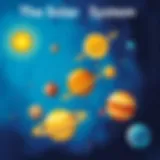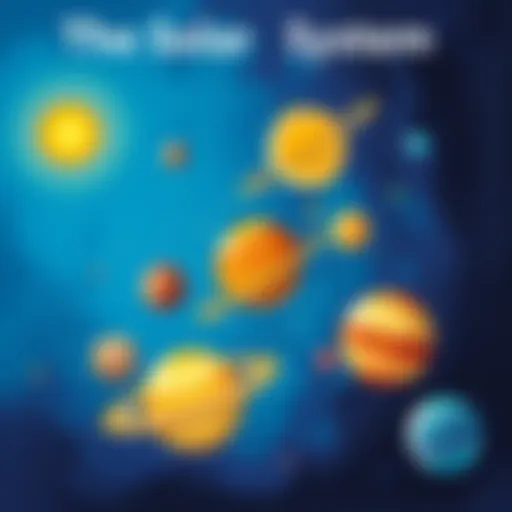Methods for Measuring UV Light: A Comprehensive Guide


Intro
Understanding ultraviolet (UV) light involves more than just knowing it exists; it requires a grasp of the methods used to measure it, which have become essential in various fields, from scientific research to everyday applications. This light, invisible to the human eye, plays a critical role in processes such as photosynthesis, disinfection, and has implications for human health. Hence, techniques for measuring UV levels are important. In this guide, we delve into a broad spectrum of methods and devices that can accurately measure UV radiation.
Science Fun Facts
- Curious Nature of UV Light: Did you know the sun emits three types of UV light? UVA, UVB, and UVC. While UVA can reach the Earth's surface and contribute to skin aging, UVB is primarily responsible for sunburns, and UVC is largely absorbed by the ozone layer.
- Notable Discoveries: In 1801, Johann Wilhelm Ritter discovered ultraviolet light shortly after the visible spectrum. This was a fascinating journey into a whole new dimension of light that humans cannot see!
- The UV Index: The UV Index is a tool that informs people how much UV radiation reaches the earth. A higher index means greater risk for harm, prompting people to take necessary sun-safety measures.
- The Sunscreen Research: The first commercially successful sunscreen, SunGuard, was created back in 1938 by a chemist named Franz Greiter. Ever since, there have been many advances in sunscreen formulations designed to provide better protection against UV rays.
"When exposure to UV light is on the rise, knowing how to regulate it can save your skin!"
Discover the Wonders of Science
Measuring UV light is not just about staying safe from sunburn; it connects deeply with various scientific ideas that influence our everyday lives. Here are a few exciting aspects we can explore:
Exploring Various Scientific Concepts
Learning about UV light measurements opens doors to various interdisciplinary realms, including:
- Environmental Science: Assessing UV levels helps to evaluate ozone layer depletion and its impacts on ecosystems.
- Health Sciences: Understanding UV behavior assists in studying skin cancer trends and preventive measures.
- Agriculture: UV measurements can help farmers determine optimal conditions for plant growth, particularly in greenhouses where light management is crucial.
Educational Videos and Animations
Visual learners can benefit greatly from online resources such as YouTube, where channels like SciShow and Crash Course break down intricate scientific concepts surrounding UV light and measurement techniques in an engaging manner.
Interactive Learning Tools
Websites like PhET Interactive Simulations offer fun, hands-on experiments allowing young learners to experience UV measurement dynamics virtually.
Real-Life Applications of Science
UV light plays a vital role in technologies applied in different industries. For example, it's crucial in:
- Water Purification: UV lamps are widely used in water treatment to eliminate harmful organisms.
- Forensic Science: Detecting bodily fluids at crime scenes often relies on UV light's ability to reveal substances invisible in normal light.
Science Quiz Time
To reinforce learning, let's engage with some fun questions!
- What type of UV light is primarily associated with causing skin burns?
- Who discovered ultraviolet light?
- True or False: The UV Index is a measure of the intensity of UV radiation at a specific time.
- A) UVA
- B) UVB
- C) UVC
- D) None of the Above
- A) Albert Einstein
- B) Johann Wilhelm Ritter
- C) Marie Curie
- D) Nikola Tesla
Learning Through Gamification
Implementing games can enhance understanding. Consider using platforms like Kahoot! to create quizzes that challenge kids on their newfound knowledge about UV light.
Science Experiment Showcase
Lastly, let’s reveal a hands-on experiment that can be done with simple materials at home to measure UV radiation without any complex tools.
Fun and Engaging Experiments
Materials Needed:
- UV-sensitive beads
- A sunny day
- A shoebox / dark container.
Step-by-Step Instructions
- Place some UV-sensitive beads in a dark container and some outside in direct sunlight.
- Observe the color change in the beads placed in the sun versus those kept in the dark container after a few minutes.
- Discuss the transformation of colors and link it to the amount of UV light present.
Safety Tips and Precautions
- Always supervise children during experiments.
- Ensure they don’t stare at direct UV light sources for prolonged periods.
- Use sunscreen when experimenting outside to protect skin from UV exposure.
Taking the time to measure UV light can not only enlighten us but also help establish a solid foundation for understanding UV's importance in our lives. This foundational resource opens up multitude learning pathways for educators and curious minds alike. If you’re interested in diving deeper, check out insightful resources such as Wikipedia, Britannica and National Institutes of Health.
Preamble to Ultraviolet Light
The topic of ultraviolet light is both fascinating and critical for a wide array of fields, from health sciences to environmental studies. In understanding ultraviolet light, not only do we dive into the unseen world that influences our daily lives, but we also grasp the significance of measuring it accurately to safeguard our health and environment. This section will establish foundational knowledge that sets the stage for the more technical aspects of UV measurement that follow.
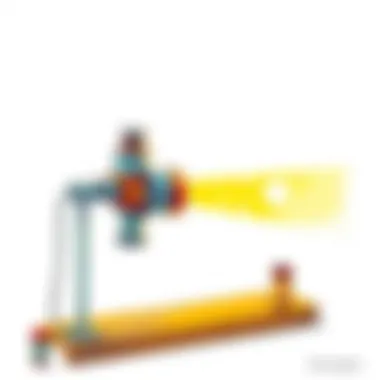

What is Ultraviolet Light?
Ultraviolet light is a form of electromagnetic radiation that is invisible to the human eye, falling just beyond the violet end of the visible spectrum. It has shorter wavelengths than visible light, which gives it unique characteristics and effects. Originating from the sun, ultraviolet light plays a role in various natural processes.
Types of UV Radiation
UVA
UVA radiation has the longest wavelength among the three types of UV light, ranging from 320 to 400 nanometers. It penetrates deeper into the skin compared to its counterparts. This type of radiation is often associated with skin aging and the formation of wrinkles, which makes it a significant player in discussions about skin health. UVA is prevalent throughout the day, so one can be exposed to it even on cloudy days.
UVB
UVB rays have a medium wavelength, from 290 to 320 nanometers. Unlike UVA, UVB has a more significant impact on our skin's surface layer, being the main culprit behind sunburn. It also plays a critical role in the synthesis of Vitamin D in the skin, which is vital for bone health and immune function. However, excessive exposure can lead to skin damage. Understanding UVB’s implications is essential, as it directly connects to skin care and protection strategies.
UVC
UVC radiation boasts the shortest wavelengths, from 100 to 290 nanometers. While it is the most harmful form of UV radiation, the atmosphere absorbs it, thus protecting us from its direct effects. UVC's relevance lies mainly in its use in germicidal lamps for sterilization purposes in various industries. Its unique characteristic is that it has the potential to cause significant harm if not properly managed during artificial applications.
Sources of UV Light
Natural Sources
Natural sources of UV radiation primarily consist of sunlight, which encompasses all types of UV rays. Factors like altitude and geographical location affect UV intensity, meaning regions closer to the equator experience higher levels of UV radiation. Understanding these conditions helps to prepare individuals for potential exposure, emphasizing the need for protective measures in areas with intense sunlight.
Artificial Sources
Artificial sources of UV light include various devices such as tanning beds and certain types of fluorescent lights. These sources are often utilized in settings like dermatology clinics for treatment purposes or in industry for sterilization. However, caution is warranted, as these artificial sources can pose risks similar to those of natural UV radiation, informing the need for regulation and safety protocols in their use.
Importance of Measuring UV Light
Measuring ultraviolet light isn't just for scientists with complicated tools in fancy labs; it's an essential part of understanding our world. Knowing how to measure UV light helps individuals, communities, and industries. It affects everything from our personal health to environmental safety. There's no two ways about it: monitoring UV radiation can make a significant difference.
Environmental Monitoring
The environment is our shared home, and the balance of sunlight we receive plays a major role in it. UV light measurements allow scientists and environmentalists to keep an eye on factors like ozone depletion. The ozone layer protects us from excessive UV radiation. Tracking UV levels helps to track changes in this crucial layer. This monitoring is vital for
- Assessing Climate Change: Changes in UV radiation can signal shifts in climate conditions, potentially highlighting problematic trends.
- Biodiversity Conservation: Too much UV can damage plant life and affect species that rely on these plants for survival. Certain plants may be more sensitive to UV changes, so measuring this light can alert conservationists to environmental hazards.
"Measuring UV light is like having a map in the wilderness; it helps guide us through unseen dangers."
Health Implications
How does measuring UV light tie in with health? Well, the stakes are high. Excessive exposure to UV rays can lead to severe health issues, including skin cancer. By monitoring UV levels, communities can promote awareness about safe sun practices, especially for children who might be more at risk. Health professionals can utilize these measurements to
- Raise Awareness: Educational campaigns can promote the importance of sunscreen and protective clothing based on UV indices.
- Inform Public Health Policies: Local hospitals and health clinics can provide guidance on UV levels during peak sunshine hours.
- Special Precautions: Knowing UV levels can help people with specific skin conditions avoid flare-ups triggered by sunlight.
Industrial Applications
UV light isn't only about skin burns or sunbathing; it's a cornerstone in various industries as well. Many manufacturing processes rely on the precision of UV light. For instance, UV curing in the printing industry allows inks to dry quickly and efficiently, while ensuring high-quality outputs. By measuring these levels, businesses can
- Ensure Quality Control: Consistent UV measurements lead to product reliability and customer satisfaction.
- Enhance Safety Standards: In industries like sterilization or cosmetics, knowing the exact UV exposure can prevent mishaps.
- Optimize Resource Use: Companies can save on materials and time by understanding optimal UV levels needed for their processes.
In summary, the importance of measuring UV light spans multiple domains—from protecting our health to fostering a balanced environment and driving industrial efficiency. Every measurement counts, and with responsible practices, we can harness the power of this invisible light for the greater good.
Measurement Devices Overview
Measuring UV light accurately is an essential task that enables us to understand its effects and applications in various fields. The quality of the measurement devices plays a significant role in achieving reliable results. These devices equip scientists, researchers, and everyday users with the means to monitor UV radiation, enhancing environmental health assessments, safety protocols, and scientific studies. By having the right tools, informed decisions about exposure and management can be made based on the UV data obtained.
Within this overview, we are going to dive into several types of devices commonly used for measuring UV light. Each has its own strengths and weaknesses—certain tools may be ideal for portable usage, while others are more suited for detailed analysis in controlled settings.
Handheld UV Meters
Handheld UV meters are popular due to their simplicity and ease of use. These compact devices are especially beneficial for quick measurements in various settings, such as outdoor activities or laboratory environments. Anyone can pick one up without extensive training, which makes these meters user-friendly for the general public, educators, and researchers alike.
The great thing about handheld UV meters is their portability. You can slip these gadgets into your bag and take them anywhere. This flexibility allows for immediate readings, which is vital when you need to assess conditions on the go. However, it is essential to ensure that readings are as accurate as possible, as these devices can sometimes be affected by environmental factors or require calibration.
UV Sensors and Detectors
UV sensors and detectors offer more specialized measurement capabilities. These devices generally range from simple detectors to advanced sensors meant for detailed scientific analysis. Let’s take a closer look at two specific subcategories within this realm: photoelectric sensors and photodiodes.
Photoelectric Sensors
Photoelectric sensors are commonly used for measuring UV light because they work by converting UV radiation into an electrical signal. This process allows for quantitative measurements, which is crucial in scientific research and practical applications. The key characteristic that makes photoelectric sensors a popular choice is their sensitivity.
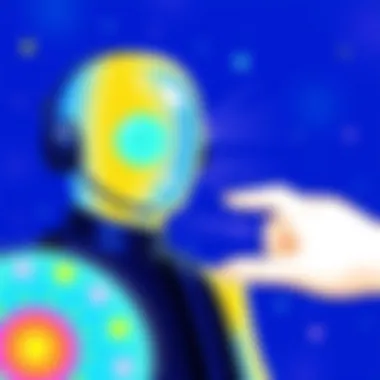

They can detect even low levels of UV light, making them vital for applications where precise measurements are required, such as studying the effects of UV radiation on plants or human skin. One unique feature of photoelectric sensors is that they come in different types, such as single-channel and multi-channel sensors, allowing users to choose based on their needs.
However, it’s worth noting that they may require periodic calibration to maintain their accuracy, and the cost can be higher than that of simple handheld devices.
Photodiodes
Photodiodes are another important tool in the UV measurement toolbox. They also convert light into an electrical current but are primarily designed to respond to specific wavelengths of UV light. Their sensitivity to various UV wavelengths can help researchers identify in-depth characteristics of UV radiation, which can be crucial for tasks like studying ozone depletion or solar radiation.
What makes photodiodes particularly advantageous is their ability to provide real-time data, allowing for immediate analysis. This feature is essential for studies where time-sensitive data is important.
However, the downside is that their response can vary depending on the wavelength, which means they need careful calibration to ensure comprehensive accuracy.
Spectroradiometers
Spectroradiometers are sophisticated devices that measure the amount of light at various wavelengths across the UV spectrum. Unlike simpler meters, they provide a detailed spectrum of data, which enables a more thorough analysis of UV radiation.
These instruments are often used in research institutions and advanced laboratory settings for detailed studies of UV effects on materials and biological systems. They can be expensive and complex to operate, but their ability to capture an expansive range of wavelengths and provide detailed insights makes them invaluable.
Calibration of Measurement Devices
Calibration is a crucial step in the process of measuring UV light. As subtle as a whisper but mighty in its implications, proper calibration ensures that the devices used to gauge ultraviolet radiation are both accurate and reliable. The reality is that UV light can have significant ramifications on human health, environmental monitoring, and industrial applications. If the equipment isn’t correctly calibrated, the data gathered can lead to misinterpretations, affecting safety protocols and research conclusions.
Importance of Calibration
Calibration refers to the process of adjusting measurement instruments and devices to align with a defined standard. Imagine trying to bake without a reliable oven thermometer; you could either undercook or burn your dessert, not knowing where you went wrong. The same principle applies to measuring UV light. When these instruments are calibrated, users can be confident that the readings they obtain reflect the true level of UV radiation. This is particularly vital since excessive UV exposure can lead to health risks such as skin damage or an increased risk of skin cancer.
In addition, by calibrating UV measurement devices, researchers and industries can establish consistent parameters for UV exposure. This means that when a reading is taken today and another tomorrow, they can trust that both are comparable. In the grand scheme of things, calibration builds trust in data integrity, fostering sound decision-making.
Calibration Standards
Calibration standards are agreed-upon reference points that ensure devices measure consistently over time. Different organizations might establish these standards, including government bodies and international organizations. For example, the National Institute of Standards and Technology (NIST) plays an essential role in ensuring calibration standards in the United States.
Calibrating your UV measuring device against a recognized standard is like measuring your growth against a yardstick — it provides an objective basis for understanding how accurate your readings are. Common standards for UV light measurement could include specific wavelengths of UV radiation, ensuring that the devices respond accurately at those wavelengths.
Moreover, calibration standards can vary depending on the application of the UV light measurement. For instance, a standard for a device used in an environmental study might differ from one used in the healthcare sector.
Calibration Procedures
Carrying out the calibration process is straightforward but requires careful attention. A step-by-step approach could include:
- Read the manual: Before starting, familiarize yourself with the manufacturer’s guidelines. This often contains vital information about standard procedures.
- Select the right calibrator: Use a reference light source known for its accuracy. This often includes calibrated lamps or filters.
- Set up your device: Ensure that your measuring instrument is placed at the correct distance from the calibrator, as specified in the guidelines.
- Take readings: Record the readings from your device against the reference source and note the differences.
- Adjust settings: If your device shows discrepancies, you might have the option to adjust it manually according to the guidelines to align it with the standard.
- Document the process: After calibration, note down the date and any adjustments made. This documentation is crucial for future reference.
In the long run, establishing a routine calibration schedule can keep your readings accurate. This way, you take charge of your measurements, ensuring they remain reliable over time.
"Calibration is not just a task; it’s a commitment to data integrity."
For further details on calibration standards, you might consult resources from the National Institute of Standards and Technology (https://www.nist.gov/) or educational materials on calibration practices (https://www.labs.gov).
Through rigorous calibration processes, we ensure that UV light measurements not only inform but also protect our health and environment.
Data Interpretation Techniques
Understanding the data collected from UV measurements is as crucial as the measurements themselves. Data interpretation techniques allow one to draw meaningful conclusions from seemingly abstract numbers. This section covers how to make sense of UV data and the myriad factors influencing those readings, ensuring that the information is not just numbers on a screen but tells a story about light’s impact on our world.
Understanding UV Data
UV data provides insights into the intensity, type, and presence of ultraviolet light. Each measurement must be examined with a keen eye and a contextually aware mindset. For instance, raw UV intensity values may tell a different tale when combined with geographical or temporal information. Being able to appreciate the surrounding circumstances gives the data its depth.
Moreover, a comprehensive grasp of UV wavelengths helps in clarifying the effects of natural and artificial sources. Whether it's how a sunny day impacts the local park's UV readouts, or how indoor lighting at a bookstore may be producing certain levels of UV light, recognizing these subtleties is crucial for accurate data interpretation.
Factors Affecting UV Readings
Several variables can skew UV readings, making it essential to account for them in any analysis. Here’s a closer look:
Time of Day
Time of day is a significant component affecting UV readings. Generally, UV intensity tends to peak during midday (typically between 10 a.m. and 4 p.m.) when the sun is at its highest point in the sky. During these hours, UV radiation is most intense, which is why this timeframe is notably crucial for monitoring UV light.
In this article, it’s beneficial to note that understanding the sun’s position can help parents and caregivers time their outdoor activities, ensuring safe exposure to sunlight. The key characteristic of time of day is its straightforward correlation with intensity—higher sun positions result in stronger readings, while early morning or late afternoon readings tend to show much lower values.
Advantages of adhering to specific times are numerous; for instance, conducting measurements during peak sunlight can provide clearer insights for activities requiring UV awareness.
Weather Conditions
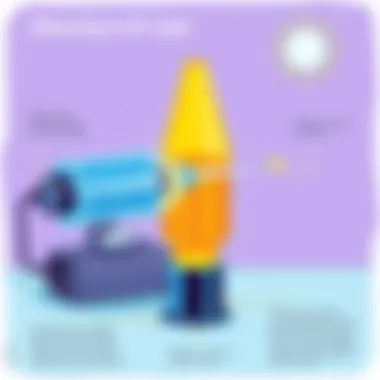

Weather conditions play a pivotal role in UV measurements as well. On a clear sunny day, UV light can penetrate more effectively, resulting in higher readings compared to overcast or rainy days. Clouds can scatter and absorb UV radiation, leading to a drop in the intensity recorded by measuring devices.
One interesting aspect to note is that even on cloudy days, UV rays can still reach the ground, albeit less forcefully. This nuanced characteristic makes weather conditions a significant consideration—recording UV data on different days provides a richer dataset for analysis. It’s beneficial for educators to share with their students how fluctuations in weather could explain significant changes in UV readings.
Geographical Location
Geographical location is another major factor that influences UV readings tremendously. Regions closer to the equator receive stronger UV radiation due to the sun's angle and atmospheric thickness. For instance, a reading from a tropical area would likely show higher UV levels compared to those recorded in more temperate zones.
This geographical understanding also opens up discussions about the increased UV exposure risks for individuals living in certain areas. Recognizing that certain locations may inherently carry more risk promotes awareness, especially in educating children about safe sun practices. The unique feature of geographic influence is its predictability—knowing where you are can provide a baseline expectation for UV exposure.
Safety Considerations
The measurement of ultraviolet (UV) light is essential for various applications ranging from scientific research to everyday health. However, it's equally important to consider the safety aspects that accompany the exposure to UV rays. This section aims to highlight the potential risks associated with UV exposure and the protective measures that can be taken to mitigate these hazards. Understanding these facets not only promotes a safer environment but also encourages responsible use of UV measurement technologies.
Risks of UV Exposure
Ultraviolet radiation can pose several health risks, making it crucial for individuals to be aware of these dangers. The primary concern lies in its ability to cause damage to the skin and eyes. Here are some significant risks associated with UV exposure:
- Skin Damage: Prolonged exposure to UV light can lead to skin conditions ranging from a sunburn to more severe outcomes like skin cancer. The skin’s protective mechanisms may be overwhelmed, particularly when exposed to high levels of radiation.
- Eye Damage: UV rays can wreak havoc on the eyes. Conditions such as cataracts and photokeratitis (a painful eye injury) may develop from excessive exposure. Protecting the eyes is not just a good idea; it’s a necessity.
- Immune Suppression: Research indicates that UV exposure can suppress the immune system, hindering the body’s ability to fight infections and other diseases. This effect can have far-reaching implications for overall health and well-being.
"Taking the time to protect yourself from UV exposure can significantly reduce the risk of long-term health issues."
Recognizing these risks is the first step toward safeguarding health.
Protective Measures
To mitigate the risks posed by UV exposure, various protective measures can be employed. Here’s a rundown on how individuals can safeguard themselves effectively:
- Sunscreen Use: A broad-spectrum sunscreen with a high SPF should be a staple in everyone’s daily routine, especially when spending time outdoors. This helps block harmful UV rays from penetrating the skin.
- Protective Clothing: Wearing long-sleeved shirts, hats with brims, and sunglasses can provide substantial protection against UV rays. Clothing made of tightly woven fabric can shield the skin more effectively.
- Timing of Exposure: Awareness of the time of day can be crucial. UV rays are often strongest between 10 a.m. and 4 p.m. Limiting sun exposure during these hours can reduce risk significantly.
- Monitoring UV Index: Checking the UV index online or through weather apps can inform about the level of UV exposure likely on a given day. Planning outdoor activities around this can aid in making safer choices.
- Stay Hydrated: Keeping hydrated can help the body's defenses against UV damage. Drinking plenty of water supports skin health and overall wellness.
Future of UV Measurement Technologies
The future of ultraviolet (UV) measurement technologies holds great promise as innovation drives advancements across various fields. Understanding this evolution is crucial because the technology we develop now can significantly affect how we manage health risks, environmental challenges, and industrial applications in the coming years.
One key aspect of this future is enhancing the precision and accuracy of UV measurement devices. Emerging technologies aim to not only measure UV intensity but also analyze its impact on living organisms and materials.
Emerging Technologies
In recent years, several cutting-edge technologies have emerged that redefine how we measure UV light. Some notable advancements include:
- Nano-Sensors: These tiny sensors harness the power of nanotechnology to provide more sensitive measurements. Their small size allows them to be integrated into various devices, from smartphones to wearables.
- Wireless UV Meters: These meters can transmit data in real-time to smartphones or computers, enabling immediate analysis of UV exposure. This instant feedback is vital in environments where UV levels can change rapidly.
- 3D Imaging for UV Mapping: New imaging techniques are being developed to create enhanced 3D maps of UV distribution in environments. This process helps scientists and researchers understand the behavior of UV radiation under varied conditions.
These technologies not only promise to improve measurement accuracy but also facilitate smarter long-term studies regarding UV exposure and its potential effects on health and the environment.
Potential Applications
The potential applications for these emerging UV measurement technologies are vast and impactful. Here are a few areas where these advancements can make a significant difference:
- Environmental Monitoring: Improved devices can help monitor UV levels in certain ecosystems, offering insights into how climate change affects biodiversity. For instance, regular monitoring can identify the impacts of increased UV on aquatic life.
- Public Health Awareness: With better UV tracking technologies, communities can receive timely alerts about high UV levels. This knowledge can be vital during seasons when skin cancer risks increase due to UV exposure.
- Agricultural Advancements: Farmers can utilize UV measurement technologies to enhance crop yields and monitor plant health. For instance, crops may thrive in certain UV conditions, so measuring exact levels can lead to better agricultural strategies.
The integration of advanced UV measurement technologies can lead to safer living environments and improved scientific research.
As we look ahead, it's clear that the methods and technologies for measuring UV light are continuously evolving. Keeping abreast of these changes is essential not only for scientific and industrial communities but also for the general public who benefits from enhanced safety and health interventions related to UV exposure.
By harnessing these innovations, we can better understand and manage the effects of ultraviolet light in our lives. The future not only holds exciting developments in measuring technologies but also in the ways these measurements influence how we interact with our world.
Ending
In wrapping up our comprehensive exploration on measuring ultraviolet (UV) light, it becomes quite clear just how pivotal this topic is in a variety of fields. Understanding UV light and its measurement not only enriches scientific research but also has tangible benefits for health, safety, and environmental monitoring. When we measure UV light accurately, we can draw vital insights that ultimately affect how we interact with our world.
Recap of Key Points
To echo the main points discussed:
- Types of UV Radiation: Different types such as UVA, UVB, and UVC possess unique characteristics and implications. This classification helps in understanding their effects on both humans and the environment.
- Measurement Devices: We explored an array of devices, from handheld UV meters to sophisticated spectroradiometers. Each tool comes tailored to specific contexts, aiding scientists, health professionals, and everyday users in acquiring accurate UV readings.
- Calibration and Data Interpretation: Calibration is key to ensuring measurement reliability, while interpreting the data gathered is crucial for making informed decisions based on those readings.
- Safety Considerations: Recognizing the risks of UV exposure is essential in mitigating health risks. Simple protective measures can help folks safeguard themselves while still enjoying the benefits of sunlight.
- Future Technologies: The landscape of UV measurement is continually evolving. Emerging technologies promise to enhance precision, making future measurement processes even more user-friendly and informative.
In essence, measuring UV light is not just a scientific task but an essential part of our daily lives. By understanding and appreciating the nuances of UV measurement, we empower ourselves and others to navigate environments more wisely and safely.
Encouragement for Further Exploration
As we conclude this guide, it's important to encourage curiosity beyond what's been discussed here. The world of UV light and its implications is vast and continually evolving. Whether you're a student, a parent, or just a interested reader, there's always more to discover.
- Look Into Local Resources: Many communities offer workshops about UV safety and measurement, which can provide hands-on experience. Don't hesitate to engage with local science museums or educational institutions.
- Dive Deeper Into Research: Organizations such as the Environmental Protection Agency (EPA) and Centers for Disease Control and Prevention (CDC) frequently update their research on UV exposure and safety guidelines. Regularly check their websites for the latest on UV technology and health recommendations.
- Stay Updated with Innovations: New technologies are constantly emerging. Follow tech forums like Reddit or tech news on platforms such as BBC Technology and the MIT Technology Review to stay informed.
In the end, knowledge is a continuous journey and remaining proactive in your learning can pave the way for new discoveries about our world and the ever-important balance with UV light.
"The only limit to our realization of tomorrow will be our doubts of today." – Franklin D. Roosevelt
By fostering a curiosity about UV light and its measurement, you can contribute to a larger understanding of our environment and the technologies that make our lives safer and more informed.
